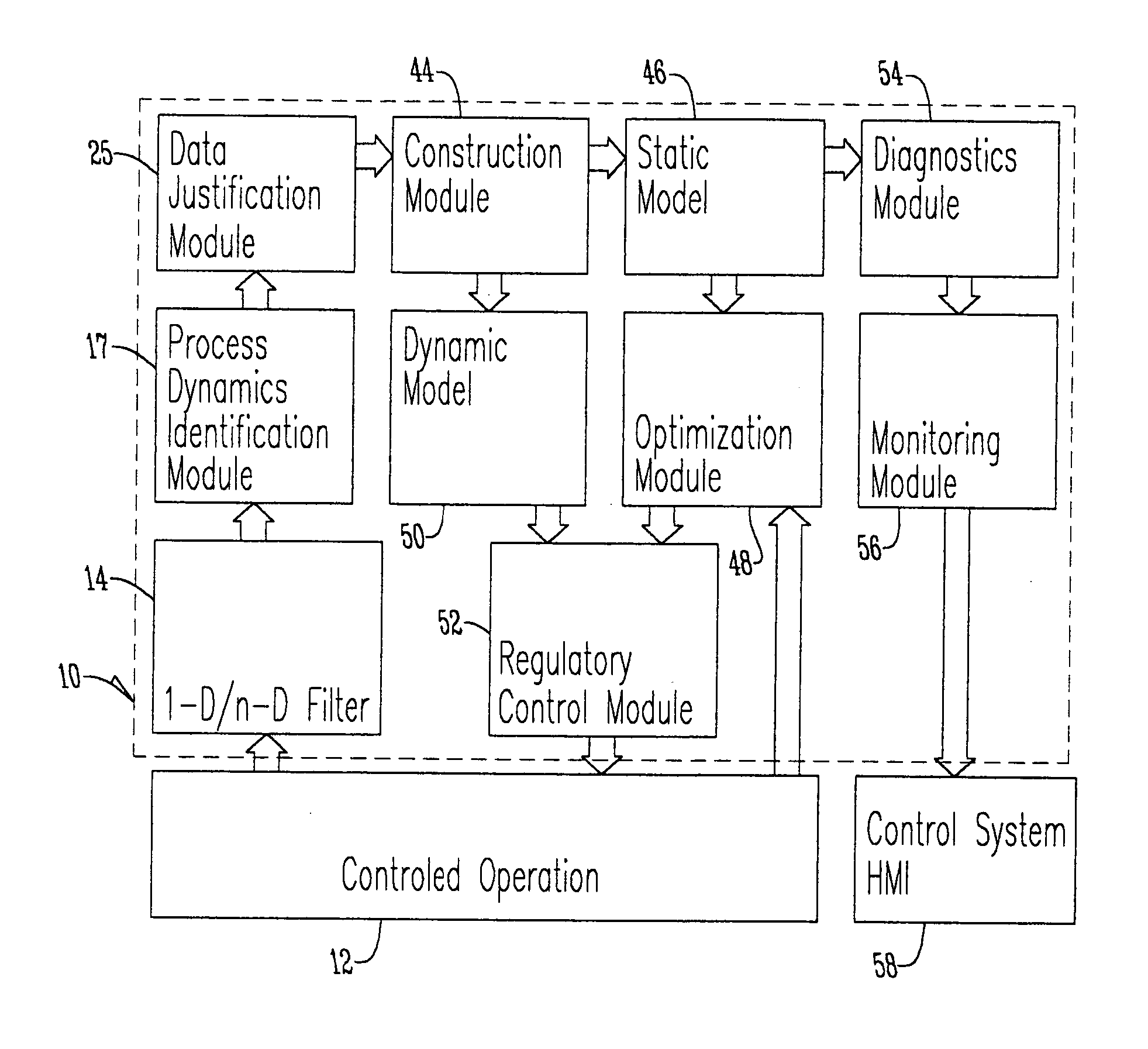Time delay definition
a time delay and definition technology, applied in adaptive control, phase difference detection, instruments, etc., can solve the problems of inefficient process control methods of accounting for lags, inability to teach or suggest specific mechanisms for determining the relationship between variables and process delay time, and inability to maximize the performance of a particular process
- Summary
- Abstract
- Description
- Claims
- Application Information
AI Technical Summary
Benefits of technology
Problems solved by technology
Method used
Image
Examples
Embodiment Construction
[0020] With reference to FIG. 1, the data mining process control system 10 (DMPC) of the present invention provides continuous process control used for controlling the operation of a controlled operation 12, improving the efficiency of that operation and ensuring regulatory compliance. The DMPC 10 includes multiple interrelated modules that interact with a particular controlled operation 12 to build an accurate model for controlling the operation 12. In general, the DMPC 10 analyzes responses of one continuous variable as a function of one or more continuous independent variables to model the operation 12. Thus, while traditional methods of modeling an operation require the operation to be at steady state conditions, the DMPC 10 converts dynamically collected data into correspondent steady state data subsets.
[0021] The initial input processing by the DMPC 10 consists of several steps. The filter 14 receives measured process variables data (hereinafter “measured data”) sent from the...
PUM
 Login to View More
Login to View More Abstract
Description
Claims
Application Information
 Login to View More
Login to View More - R&D
- Intellectual Property
- Life Sciences
- Materials
- Tech Scout
- Unparalleled Data Quality
- Higher Quality Content
- 60% Fewer Hallucinations
Browse by: Latest US Patents, China's latest patents, Technical Efficacy Thesaurus, Application Domain, Technology Topic, Popular Technical Reports.
© 2025 PatSnap. All rights reserved.Legal|Privacy policy|Modern Slavery Act Transparency Statement|Sitemap|About US| Contact US: help@patsnap.com



